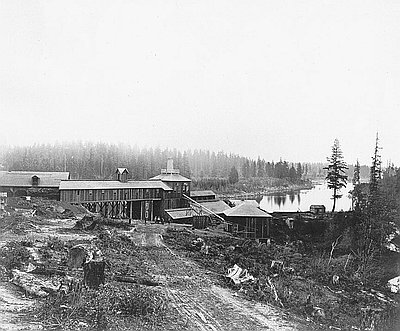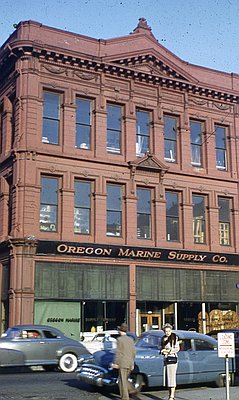Building Materials: Wood, Brick, Stone
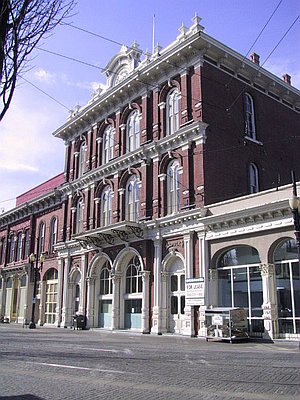
Cast iron New Market Building, Portland, ca. 1872 Cast iron New Market Building, Portland, ca. 1872
Wood remained far and away the primary building material in Oregon during these decades. Brick was frequently used for commercial buildings, and combining brick masonry bearing walls with heavy timber floors, joists, and posts permitted buildings of three and four stories to rise in Portland and other large towns. Stone was seldom used in early Oregon. Quality building stone such as sandstone and granite was found in only a few places and was difficult to transport until railroads were built later in the twentieth century. As population grew in areas where good building stone was close at hand, stone buildings were erected in towns such as Pendleton and Baker City. Stone structures were also common in southeastern Oregon, where timber was scarce.
From the 1860s into the 1880s, decorative facades of cast iron were especially popular for retail stores. Cast iron front panels and interior support posts were used on masonry buildings, making it possible to create store fronts with large expanses of plate glass windows for the display of goods. The presumed fire-resistant quality of cast iron was also a factor in its popularity, although it proved to be an illusion. Cast iron was easy to detail, and often appeared in the Italianate style with its repeated arches and decorative flourishes. Most cast iron facades erected in Oregon were cast in the state, while other came from San Francisco foundries.
Marion Dean Ross, in describing the Portland Hotel, wrote that its Queen Anne style “was a means of combining the familiar classically based details of features like doors, windows, and porches, with the more picturesque and irregular massing that the Gothic Revival had made popular. Stone, brick, wood, and stucco could be combined,” letting each material remain visible and distinct. These combinations were made possible in Oregon by improved transportation, but they were driven by esthetic ideas that delighted in a variety of textures and colors. While there was plenty of Oregon wood used to build the Portland Hotel, other materials dominated the visual aspect of the structure. In both ideas and materials, “outside” influences predominated, as they did in most major buildings constructed in the period.
The railroad era gave Oregon the opportunity to keep abreast of current trends in the building trades, as well as the ability to affordably import or manufacture materials that were popular. Particular materials might be favored by fashion, as exhibited in the profusion of styles and their often elaborate character; by business considerations, such as display windows or an image of security; or by concerns for safety, as in the fire-retarding qualities of cast iron, brick, and stone.
© Richard H. Engeman, 2005. Updated by OHP staff, 2014.
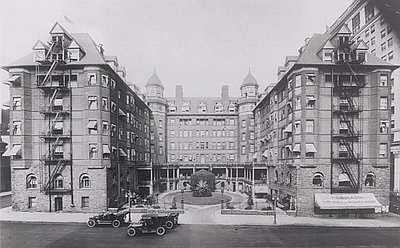
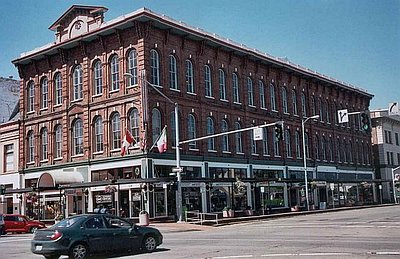
Sections
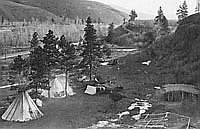
Native Ways and Explorers' Views before 1800
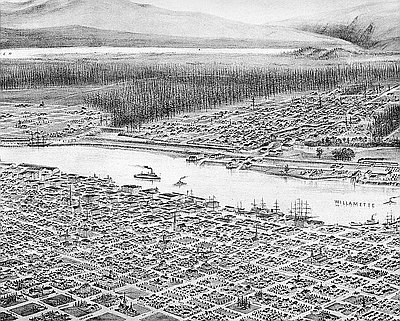
Euro-American Adaptation and Importation
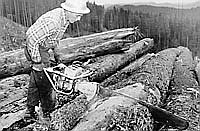
Sawn Lumber and Greek Temples, 1850-1870
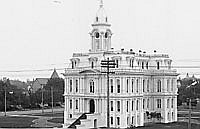
Architectural Fashions and Industrial Pragmatism, 1865-1900

Revival Styles and Highway Alignment, 1890-1940
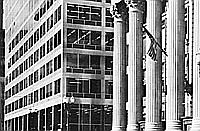
International, Northwest, and Cryptic Styles
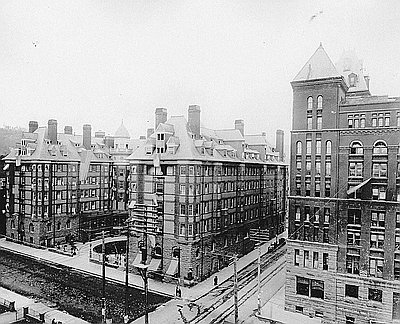
Glossary
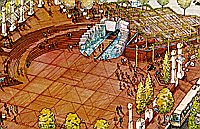
Built Environment Bibliography
Related Historical Records
Portland Chinatown, 1886
This color lithograph accompanied an article titled “A Night in Chinatown” in the October 1886 issue of West Shore, a Portland news and literary magazine. Several thousand Chinese …
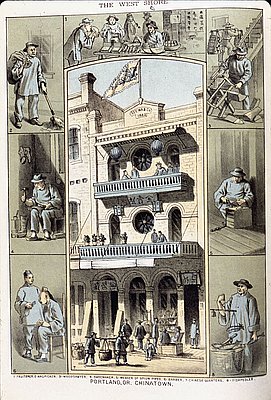
Bird’s-eye View of Prineville, c. 1915
This bird’s-eye view of Prineville, Oregon was taken by Charles Wesley Andrews (1875–1950) around 1915. The photograph looks east down Main Street. Ochoco Creek is visible passing through …
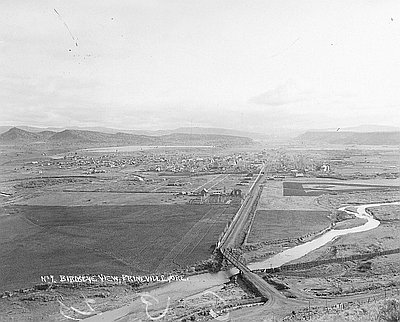
Oswego Iron Works
In 1867, workers smelted the first iron ingots produced at the Oregon Iron Company at the confluence of the Willamette River and Sucker Creek, now known as Oswego …
